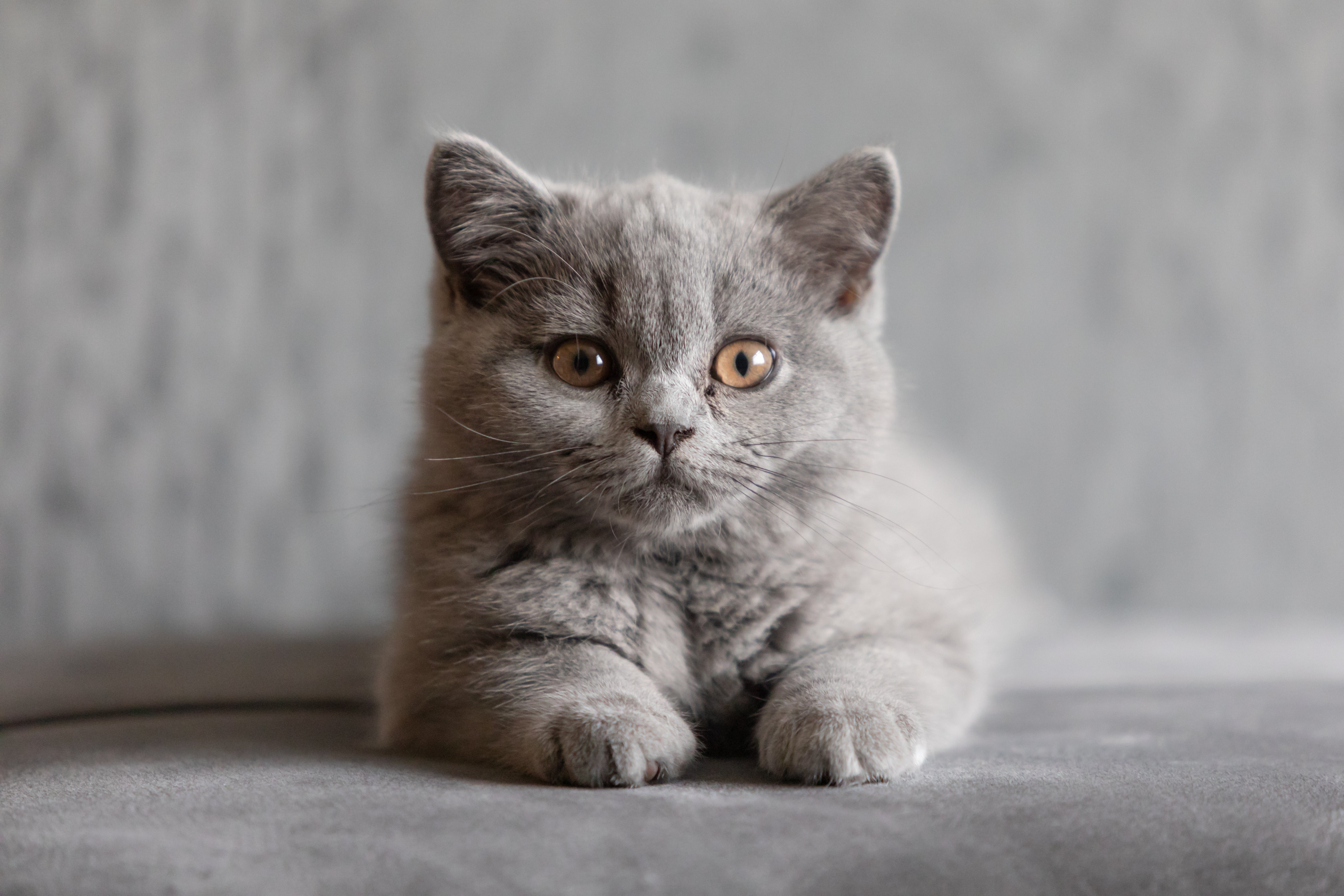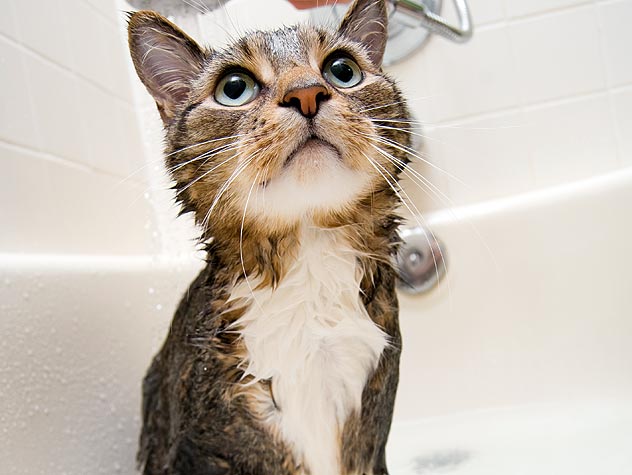Breed characteristics carousel
Learn More
Need to Know
- Great for first-time cat owners
- Quiet and sedate cat
- Highly active and inquisitive cat
- Sociable and dependent cat
- Slightly talkative cat
- Average build cat breed
- Requires grooming once a week
- Needs extensive outdoor space
- Great family cat
- Can be regularly left alone for a few hours
- Great for a relaxed home

Personality
For classic cat antics, look to the British Shorthair cat. They’ll steal your jewelry, jump off your tables, and then come running to you for affection. They are attention hogs but aren’t constantly underfoot and often keep a low profile, playful but not excessively so. Quiet, even-tempered, and British in demeanor, they can be aloof with strangers.
With owners, however, they are faithful and devoted companion cats, always seeking love and attention. The more you give to them, the more they give back. These confident and calm cats do have a mischievous streak, but for the most part, are happy just to be near their owners and observe whatever they are doing.
They tend to love on an entire family, not just one person and can be more independent than other cat breeds despite loving the spotlight. British Blues are not vocal cats and squeak rather than meow. However, their purrs are some of the loudest, resembling motorboats.
The British Blue cat sings “God Save the King” as a native Brit, likely the oldest natural cat breed in England. They began as working cats, descended from a common street cat called the European Shorthair which landed in Britain via the Romans over 2,000 years ago. They were rodent chasers, closely related to the African wildcat. Because of the weather, the breed developed a stocky and more athletic body with a water-repellent coat. By the 1800s, the British began keeping the cats as companions, valuing their personality, strength, and beauty.
During World War II, the breed was nearly decimated. It took generations, but the breed prevailed, coming to America in the 1960s.
British Blues love being around their owners. They are a human-oriented breed but get along well with other cats and household pets, particularly dogs that are cat-friendly.
Not quite as active as other cat breeds, they can be lazy and might have to get owner motivation in order to exercise, which is important for maintaining their weight. Food dispensing toys, chasing games, and general play with their owners can help them stay active. They have short bursts of energy akin to dog zoomies which they like to buffer with long naps.
British Shorthair cats love owner interaction and entertainment as much as they do a cat-secure yard or cat run.
The British Shorthair cat breed has a dense coat that could use a combing once a week to get rid of dead hair.
A companion cat through and through, the British Blue thrives on company, even when they are keeping more of a low profile. They like to know their owners are near and will engage in play with them when they feel like it.
Friendly and easygoing, the British Shorthair cat is ideal for child-free homes and homes with older children. They have open, doll-like faces that might tempt young kids into thinking they are play toys. Small children who don’t respect cat boundaries might send them into hiding.
The cost of a British Shorthair from a breeder is significantly more than the cost of adopting one from a local shelter or rescue. The adoption fee usually covers additional items such as spaying or neutering, vaccines, and microchipping.
Adopting a British Shorthair cat or kitten
Interested in adopting a British Shorthair cat or kitten? Here are answers to some common questions about bringing one of these charming cats home.
They are generally friendly, especially with humans. The exception is young children who might not be used to cat behavior and boundaries.
They’re more of the type to use their free time to lounge around rather than burn calories by jumping and climbing. They can become overweight so owners need to encourage them to get physically active with motivations like food and toys.

Learn more about feeding and caring for your British Shorthair on Purina.
Did You Know?
- Lewis Carroll’s Cheshire Cat character in Alice in Wonderland might have taken inspiration from the British Shorthair. The way the cat “smiles” is similar to the shape of a British Blue’s mouth.


